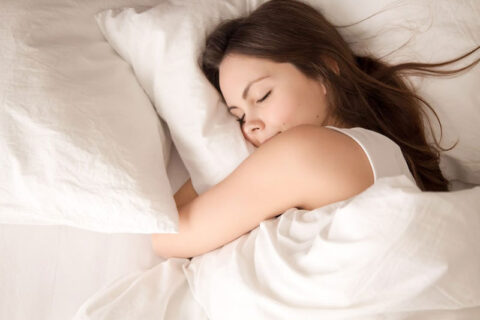All About Appliances

Researchers at Hiroshima University Hospital have developed a potential new way to treat sleep apnea.
Obstructive sleep apnea, or OSA, is not just a sleep disorder; it is a dangerous health condition that can cause the muscles of the throat to relax and block the airway during sleep. According to the American Sleep Apnea Association, 22 million Americans are living with the condition – many of whom are undiagnosed.
Immediate effects of a narrowed or blocked airway include gasping, snorting or choking. Many people living with OSA also experience daytime fatigue, headaches and inability to focus. Long-term effects of the condition include high blood pressure, cardiovascular disease, negative effects on memory and cognition, weight gain, obesity and an increased risk of developing diabetes.
‘When you have sleep apnea, you don’t reach Stage 3 of sleep, also known as slow-wave sleep,’ said Dr. Sean Endsley, a Waco, Texas, dentist.
Stage 3 of sleep is critical for the body’s physical renewal, regulation of hormones and growth. It is also where memory and thought processes are organized.
Treatments for OSA include continuous positive airway pressure (CPAP) machine and surgery for extreme cases. But, more and more patients – and their dentists – are turning to oral appliances to treat OSA.
The researchers at Hiroshima University’s Department of Orthodontics developed an oral appliance to help treat individuals living with mild to moderate sleep apnea. The researchers’ appliance moves the lower jaw forward to make the airway larger in the back of the mouth.
The appliances are custom made and allow the jaw to move, so the face and teeth are not affected.
To test their appliance, the team scanned study participants with mild to moderate sleep apnea with Multislice Computed Tomography (MSCT). The MSCT is a type of X-ray that rotates around an object, taking a picture with each rotation.
The researchers then combined the images collected by the MSCT to create a 3D model of the airway. After measuring airways of 13 patients lying flat, the researchers found that the appliance had significant benefits, and wearing it cut the number of breathing interruptions by nearly half. They also found that airways were widened when wearing the appliance.
Using MSCT to measure airways of sleep apnea patients while in a lying position is a new approach – previous studies have generally measured patients while standing, which does not mimic sleep conditions.
The study further supports the benefits of oral appliance therapy and supports the use of oral appliance therapy over other OSA interventions such as the CPAP machine.
‘The CPAP machine may be useful in some cases, but for those living with mild to moderate OSA, oral appliance therapy is ideal,’ Endsley said.
Source: Hiroshima University. ‘Sleep apnea: Oral appliance could help you (and your partner) sleep better.’ ScienceDaily. ScienceDaily, 16 April 2019.


